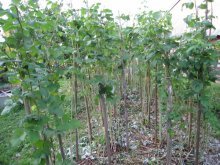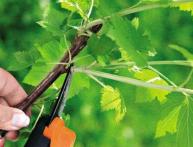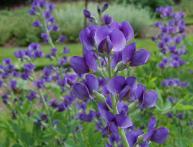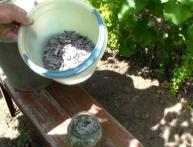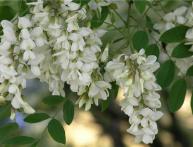How to plant raspberries
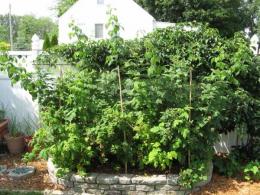
Raspberries - one of the most favorite shrubs among our gardeners. And this is correct, since such an undemanding plant with delicious berries still needs to be looked for... But, as with growing any plant, there are several nuances that need to be taken into account. Let's talk about how to plant raspberries.
Content:
- Choosing a location for a future raspberry garden
- Boarding time
- Soil preparation
- Raspberry planting technology
- Spring care
Choosing a location for a future raspberry garden
Selecting a location for the future raspberry tree, this is one of the most important points in planting it, since the bushes can remain in one place for 10-12 years. The best thing, of course, for these purposes is a flat area or with a slight slope, well drained. It is completely unacceptable to plant raspberries in marshy and damp places - there will be no benefit from such planting. It is also necessary to take into account that raspberries produce a lot of shoots, so it is better to place them along the hedge.
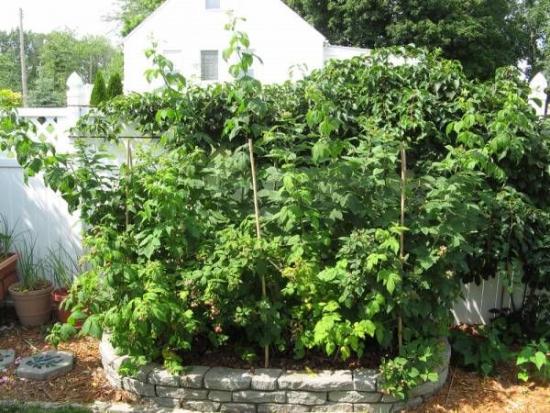
Raspberry is a sun-loving plant that prefers open forests, forest clearings and edges protected from the winds, where a lot of snow accumulates in winter. Therefore, it needs secluded corners on the site with good lighting to place raspberries on them in 2-4 rows.
You can calculate how many bushes you need to plant for your family, and depending on this, allocate space for a raspberry garden. The annual consumption rate for raspberries is 4 kg. Then a family of 4-5 people will need about 20 kg. Approximately this amount is obtained from 30 raspberry bushes.
To prevent raspberries from taking over new space, they can be “pacified” by planting sorrel around.
Boarding time
Raspberries are a plant that can be planted at any time of the year (except winter, of course). But it is best to do this activity in the fall - since it is during this period that the combination of humidity and temperature is optimal for planting bushes. Naturally, it is only necessary to plant 20 days before the first frost so that the plants have time to take root.
If you did not plant raspberries in the fall, then you can do it in the spring. It is important not to miss the planting deadlines. Plants are planted before awakening and buds begin to open. If for some reason planting may be delayed, then in the digging area (where new seedlings are stored), you need to delay the melting of the snow by simply covering it with a wide layer of sawdust.
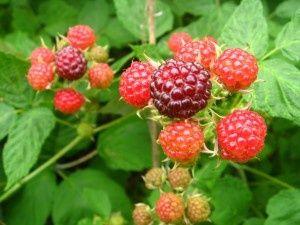
Be careful not to damage the delicate buds on the raspberry rhizomes when selecting raspberry seedlings from the pile. Be careful with them when planting too.
Soil preparation
Preparing the soil before planting raspberries should be done in the fall, if you are going to plant in the spring, and about a month before the fall planting. But in any case, the soil should be carefully dug to a depth of at least 30 cm and fertilizer should be added. Humus, half-rotted manure or various composts are perfect for the latter. Mineral fertilizers Here, too, superphosphate (50-60 g per 1 sq. m.), potash fertilizers (30-40 g per sq. m.) will not hurt.
Raspberry planting technology
Once you have decided on the location and time frame, you can proceed directly to planting. To do this, you need to dig a trench approximately 30 cm deep and 60-70 cm wide and pour the required amount of fertilizer into it (if all this was not added during digging).Then the raspberry bush is positioned so that all the roots are evenly distributed along the bottom. After which the hole is filled with earth, which must be compacted around the plant. All that remains is to water the raspberries.
After watering, the soil around it will shrink. Add additional loose soil to the hole, which will role of mulch cover. The roots of raspberry seedlings should be filled in such a way that the rhizome buds fall to a depth of 2-3 cm. Another proven raspberry planting scheme is 1x1 m, 1.5x1.5 m and 2x0.5 m.

If traces of fungal diseases are found on the bark of the planting material and the buds are dead, cut off the stems near the soil and burn or remove them from the site. But if the buds are normal, alive, and the roots are powerful, then shorten the stem to 40 cm.
Mulch the soil around the raspberry seedlings with humus, straw or black covering material. If there is no mulch at hand, then hoe the soil twice more before summer so that it is weed-free and loose.
Spring care
On a young raspberry plantation in the second year of planting, as soon as the soil thaws, you can install stakes and tie to them those shoots that are left for fruiting. There are not many fruiting shoots yet - 1-2 per bush, but this season you can already expect up to 400 g of berries from each raspberry bush. Mulch the soil around the bushes, water the bushes regularly, raspberries are a very moisture-loving crop.
On an already mature fruit-bearing plantation, in early spring (possibly before the soil thaws, since later there may not be enough time), an inspection is carried out, damaged stems are removed, weak ones are cut out, and bushes are thinned out. Excess and damaged shoots are cut out at the very base.In order to improve ventilation of the plantation and to help fruit-bearing bushes, wires are stretched to the supports and fruit-bearing shoots are tied to them. It is good to do this before the buds open, so as not to damage the fruit buds.
Thus, when planting raspberries, you need to choose a place, determine the time of planting and prepare the soil. And once you understand the planting technique and spring care of raspberries, you can confidently plant new raspberry fields and replace old ones.



